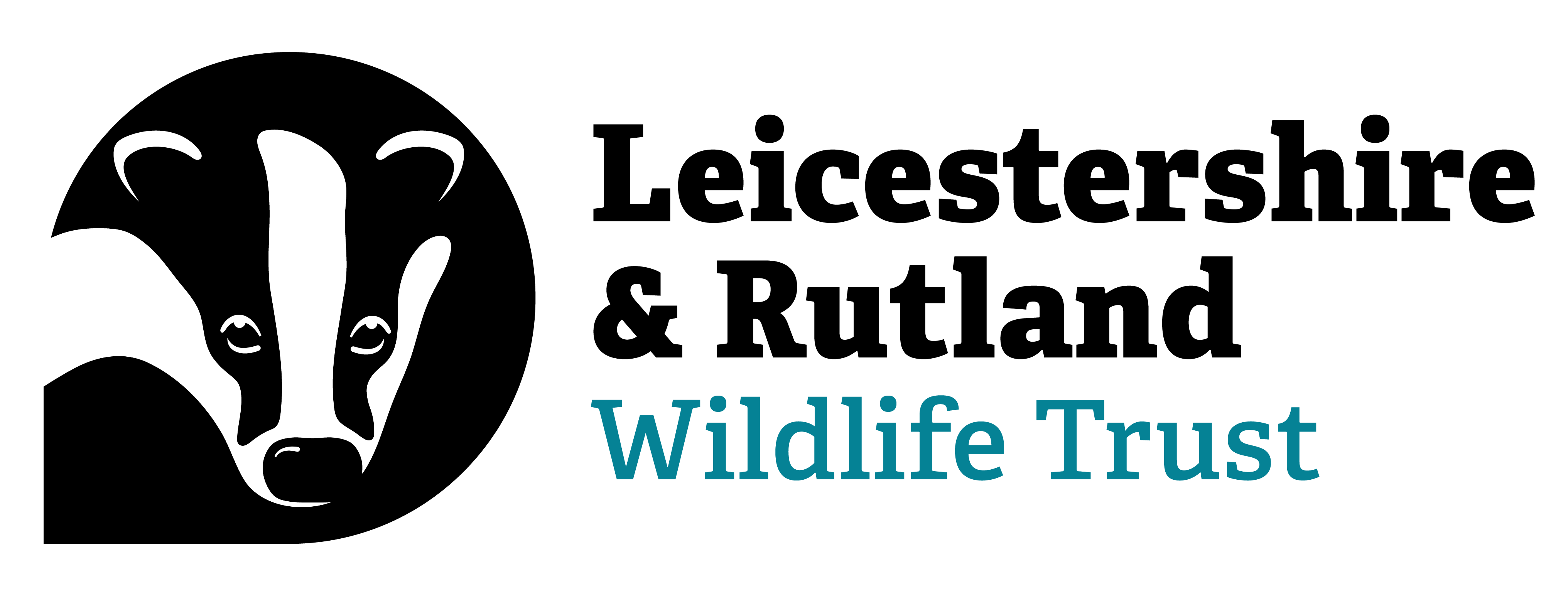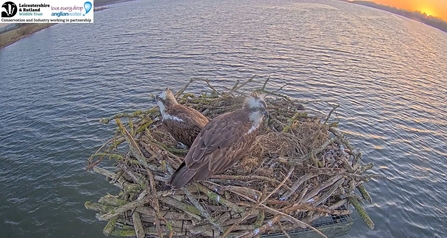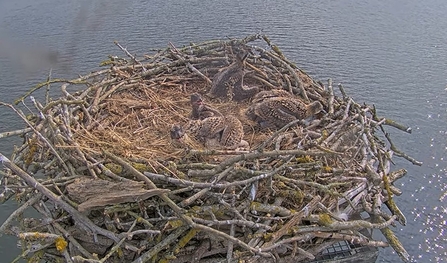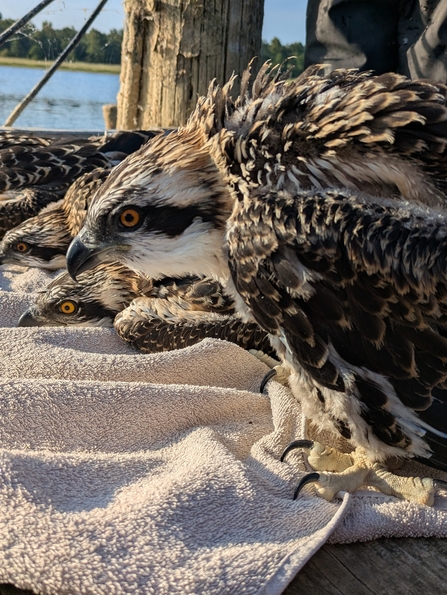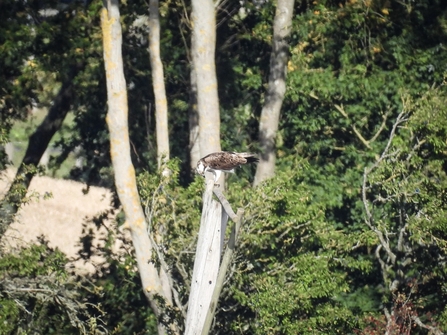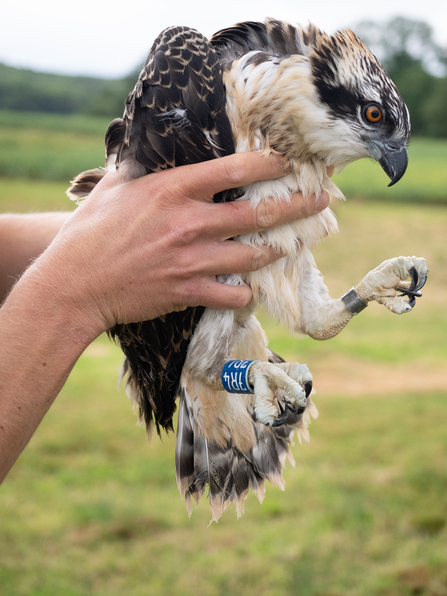The start of October marks the end of the Osprey season for 2025 – and what a year it’s been. This year we had eleven successful breeding pairs, 31 chicks fledged, the tragic loss of 3R6, reaching 10,000 subscribers on the Rutland Osprey YouTube Channel, and of course hitting the fantastic milestone of 300 Osprey chicks ringed since the project began.
The Osprey season started on 13th March this year, with the dramatic return of 25(10), a female that breeds elsewhere within the greater Rutland area, arriving onto the Manton Bay nest. This is not the first time she has made a stop off at Manton Bay, and it wasn’t long until she was joined by 33(11), the resident male at Manton Bay. 33(11) and 25(10) had a few days on the nest together and spent that time causing quite a stir. Eventually, their dalliance was put to an end and Maya made her much-anticipated return on 17th March, very quickly seeing off 25(10) so that Maya could reclaim the Manton Bay nest. After this, 25(10) did return to her usual nesting site and did raise chicks this year with her breeding partner.
